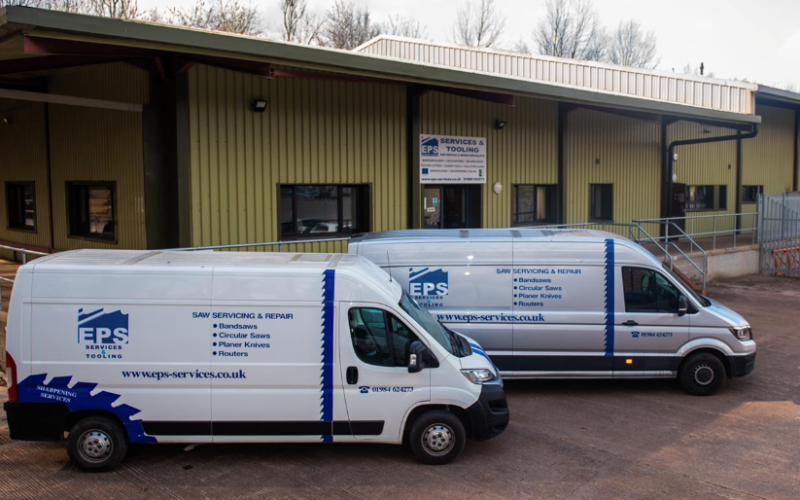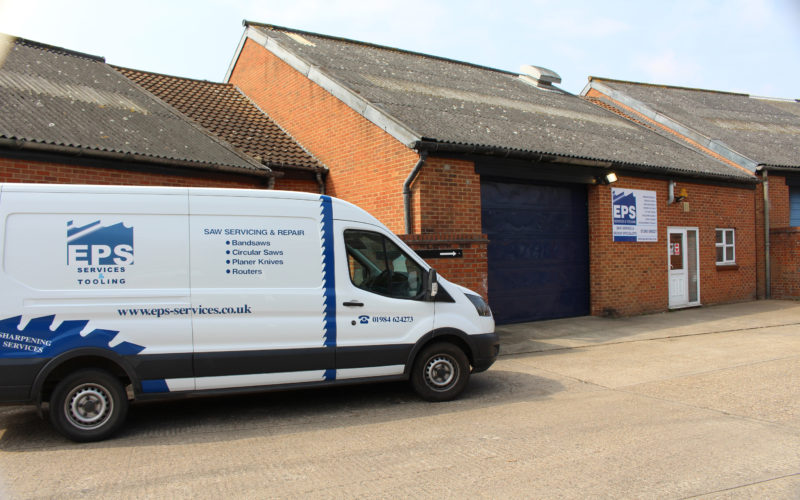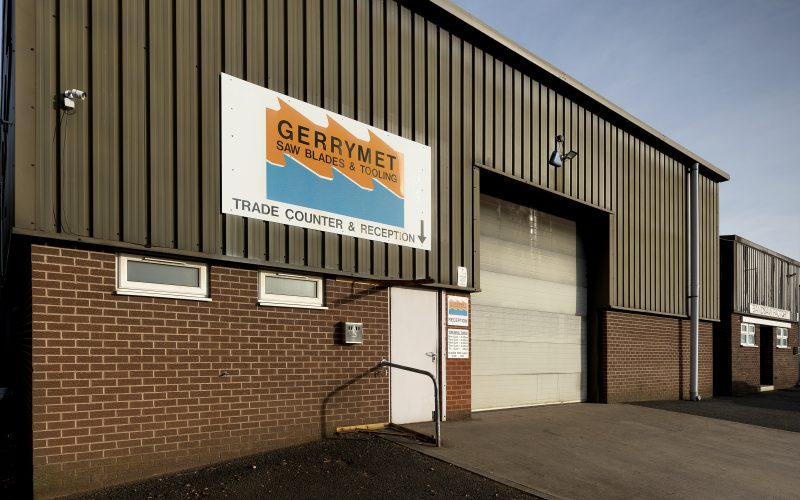A Guide to Common Bandsaw Blade Problems
As specialists in bandsaw blades, we often get asked to solve several common related problems. While some may be experts in their use, others are just starting out in the world of woodwork and are looking for guidance. At EPS Services & Tooling, we’re passionate about supporting the work of local and UK-based craftsmen and tradesmen. This is why we’ve pulled together this guide to identify key problems, their likable causes, and our recommended solutions.
Blade Breakages
One of the biggest complaints and issues we encounter is broken blades. After investing money into buying a high-quality and ‘durable’ blade, the worker finds that it has snapped or several teeth have broken. This isn’t just an annoyance – it can cost you significantly in terms of productivity. Luckily, if you’ve done your research and purchased a good-quality blade, the issue is likely something that can be addressed with each. The main causes for blade breakages are:
- Incorrect blade.
- Band tension is too high.
- Using incorrect cutting fluid.
- Not matching the wheel diameter to the blade.
- Worn pressure block.
- Teeth not raised from the material before starting.
- Side guides set too tight.
Preventing Blade Breakages
The first thing to do is to check the blade in question. Consider:
- What material am I trying to cut?
- Has this blade been manufactured for use with my specific machine?
- Are the teeth on this blade too coarse for the desired application?
Generally, choosing the right blade will significantly reduce the risk of damage. Once you have marked this off the list of possible reasons, move on to consider whether you need to check the machine’s operator’s manual for specific information. This could include:
- Desired band tension.
- Desired side guide settings.
- Installation process.
It may be that you have set up the blade incorrectly for your machine. Simply adjustments here can make a significant difference. Other things to consider are:
- Are the blade teeth too coarse?
- Do you need to reduce the feed pressure?
- Do you need to check or replace your machine’s coolant?
- Do you need to use a thinner blade or lower the speed that it is working at?
- Do you need to replace your pressure block?
- Do you need to allow clearance of the material in question before starting the cut?
Premature Dulling
Next, let’s look at the premature dulling of teeth. Once you’ve purchased a bandsaw blade, you should expect it to last anywhere between 6 months and several years. The actual length will depend on factors such as its frequency of use and the quality of the materials it is made of. However, if you’ve noticed the teeth are becoming dull after just a few uses, there may be an issue here. You want to ensure you get value for money from your investments, so let’s take a look at some of the common causes.
- Blade installed incorrectly.
- Reduced breaking-in period.
- Variations in hardness on material.
- Not using the right cutting fluid.
- Cutting at a too high speed.
Preventing Premature Dulling
The first thing you’ll want to do is check that you have installed the bandsaw blade correctly. It needs to be facing in the right direction, with the teeth angled appropriately for your machine and the material in question. If you have any queries regarding this, a member of our team at EPS Services & Tooling will be available to advise. Next, look at the set-up on your machine. Ask yourself:
- Are the speeds I am using appropriate for the material and blade in question?
- Do I need to give the blade a longer breaking-in period as per the manufacturer’s guidance?
- Do I need to increase the feed pressure?
- Does the coolant in my machine need to be replaced or topped up?
Generally, you’ll find the solution to your premature teeth dulling issue here.
Inaccurate Cutting
Sometimes we get clients coming to us saying that, no matter how hard they’re trying, they cannot achieve an accurate cut using the blade in question. This generally isn’t down to the quality of the blade but rather wear-and-tear or lack of information about proper installation. Some of the main causes of incorrect bandsaw blade cutting include:
- Prematurely dulled teeth.
- An over or under feed.
- The use of an improper pitch blade.
- Non-evenly applied cutting fluid.
- An incorrectly chosen blade.
- Worn or loose guides.
Preventing Inaccurate Cutting
As with the other common complaints, firstly check your blade. Are you using the right blade for the right application? Does the blade have too many teeth per inch for the specific cut you’re trying to achieve? Working with a professional and reliable bandsaw blade manufacturer and supplier will help to minimize the chance of choosing an incorrect blade. On occasion, you may just need a new blade to achieve the precise cut you’re aiming for. If not, ask yourself:
- Do I need to adjust my coolant nozzle?
- Do I need to tighten or replace my guides?
- Do I need to readdress the cutting chart from the manufacturer?
Quality Bandsaw Blades
For many woodworkers, issues with their bandsaw blades come from purchasing ones that are of lesser quality than expected. This not only puts your investment at risk but also increases the chance of poor cuts and breakages in the near future. Here at EPS Services & Tooling, we manufacture all of our blades from the finest high carbon steel sourced in Somerset from EPS. All of our blade teeth are finished consistently, prioritising sharpness and geometry for an accurate cut. We also electronically harden each one to improve consistency and endurance. And, our welds are all annealed to remove brittleness and the danger of fatigue. This gives you assurance and peace of mind, knowing that the tool you’re using is built for the most rigorous of environments.
If you have any questions about our range of bandsaw blades or are experiencing an issue we haven’t raised in this guide, please get in contact today. We’re always here to help.






